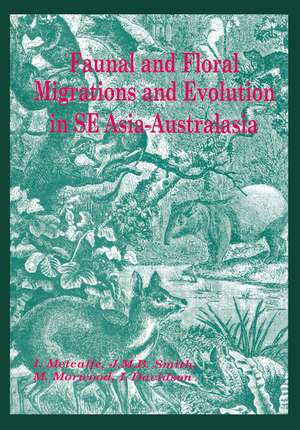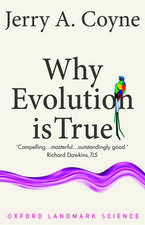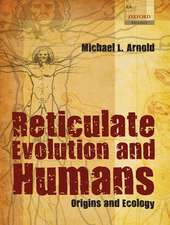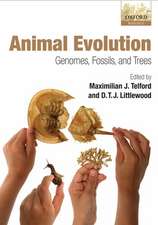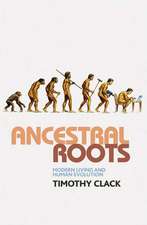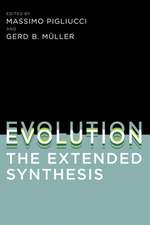Faunal and Floral Migration and Evolution in SE Asia-Australasia
Autor Ian Metcalfe, Jeremy M.B. Smith, Mike Morwood, Iain Davidsonen Limba Engleză Hardback – iun 2001
Preț: 1123.06 lei
Preț vechi: 1369.59 lei
-18% Nou
Puncte Express: 1685
Preț estimativ în valută:
214.89€ • 224.39$ • 177.45£
214.89€ • 224.39$ • 177.45£
Carte tipărită la comandă
Livrare economică 15-29 aprilie
Preluare comenzi: 021 569.72.76
Specificații
ISBN-13: 9789058093493
ISBN-10: 9058093492
Pagini: 416
Ilustrații: figs.tabs.
Dimensiuni: 178 x 254 x 24 mm
Greutate: 0.85 kg
Ediția:1
Editura: CRC Press
Colecția CRC Press
ISBN-10: 9058093492
Pagini: 416
Ilustrații: figs.tabs.
Dimensiuni: 178 x 254 x 24 mm
Greutate: 0.85 kg
Ediția:1
Editura: CRC Press
Colecția CRC Press
Public țintă
ProfessionalCuprins
This multidisciplinary book focuses on the relationships and interactions between palaeobiogeography, biogeography, dispersal, vicariance, migrations and evolution of organisms in the SE Asia-Australasian region. The book investigates biogeographic links between SE Asia and Australasia which go back more than 500 million years. It also focuses on the links between geological evolution and biological migrations and evolution in the region. It was in the SE Asian region that Alfred Russell Wallace established his biogeographic line, now known as Wallace's Line, which was the beginning of biogeography. Wallace also independently developed his theory of evolution based on his work in this area.;The book brings together, for the first time, geologists, palaeontologists, zoologists, botanists, entomologists, evolutionary biologists and archaeologists, in the one volume, to relate the region's geological past to its present biological peculiarities. The book is organized into six sections. Section 1 Paleobiogeographic Background provides overviews of the geological and tectonic evolution of SE Asia-Australasia, and changing patterns of land and sea for the last 540 million years. Section 2 Palaeozoic and Mesozoic Geology and Biogeography discusses Palaeozoic and Mesozoic biogeography of conodonts, brachiopods, plants, dinosaurs and radiolarians and the recognition of ancient biogeographic boundaries or Wallace Lines in the region. Section 3 Wallace's Line focuses on the biogeographic boundary established by Wallace, including the history of its establishment, its significance to biogeography in general and its applicability in the context of modern biogeography.;Section 4 Plant biogeography and evolution includes discussion on primitive angiosperms, the diaspora of the southern rushes, and environmental, climatic and evolutionary implications of plants and palynomorphs in the region. The biogeography and migration of insects, butterflies, birds, rodents and other non-primate mammals is discussed in section 5, Non Primates. The final section 6 Primates focuses on the biogeographic radiation, migration and evolution of primates and includes papers on the occurrence and migration of early hominids and the requirements for human colonization of Australia.
Descriere
This multidisciplinary book focuses on the relationships and interactions between palaeobiogeography, biogeography, dispersal, vicariance, migrations and evolution of organisms in the SE Asia-Australasian region. The book investigates biogeographic links between SE Asia and Australasia which go back more than 500 million years. It also focuses on the links between geological evolution and biological migrations and evolution in the region. It was in the SE Asian region that Alfred Russell Wallace established his biogeographic line, now known as Wallace's Line, which was the beginning of biogeography. Wallace also independently developed his theory of evolution based on his work in this area.;The book brings together, for the first time, geologists, palaeontologists, zoologists, botanists, entomologists, evolutionary biologists and archaeologists, in the one volume, to relate the region's geological past to its present biological peculiarities. The book is organized into six sections. Section 1 Paleobiogeographic Background provides overviews of the geological and tectonic evolution of SE Asia-Australasia, and changing patterns of land and sea for the last 540 million years. Section 2 Palaeozoic and Mesozoic Geology and Biogeography discusses Palaeozoic and Mesozoic biogeography of conodonts, brachiopods, plants, dinosaurs and radiolarians and the recognition of ancient biogeographic boundaries or Wallace Lines in the region. Section 3 Wallace's Line focuses on the biogeographic boundary established by Wallace, including the history of its establishment, its significance to biogeography in general and its applicability in the context of modern biogeography.;Section 4 Plant biogeography and evolution includes discussion on primitive angiosperms, the diaspora of the southern rushes, and environmental, climatic and evolutionary implications of plants and palynomorphs in the region. The biogeography and migration of insects, butterflies, birds, rodents and other non-primate mammals is discussed in section 5, Non Primates. The final section 6 Primates focuses on the biogeographic radiation, migration and evolution of primates and includes papers on the occurrence and migration of early hominids and the requirements for human colonization of Australia.
